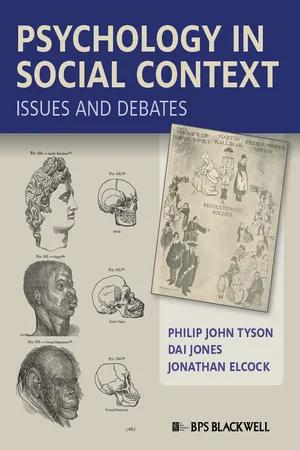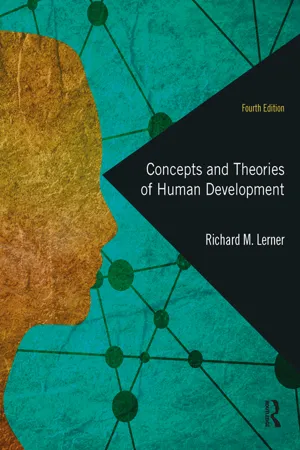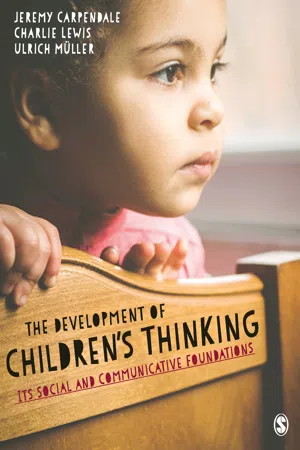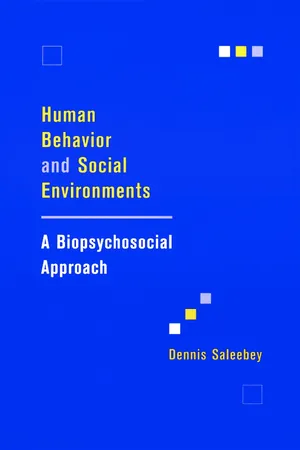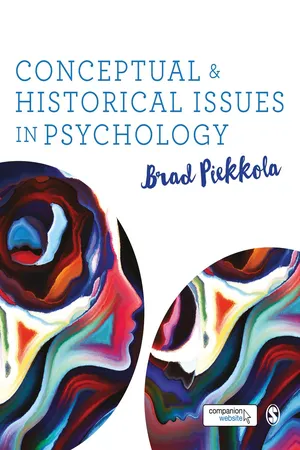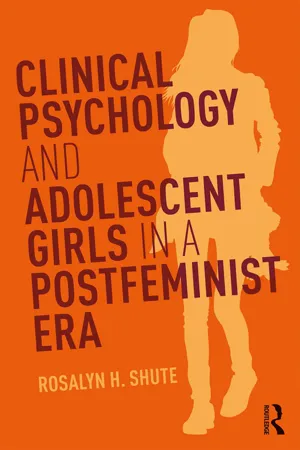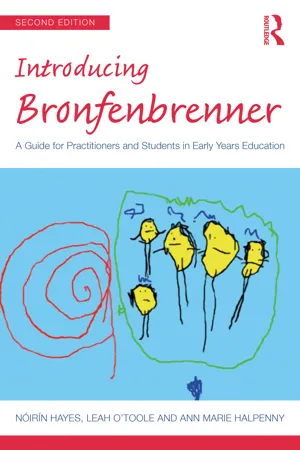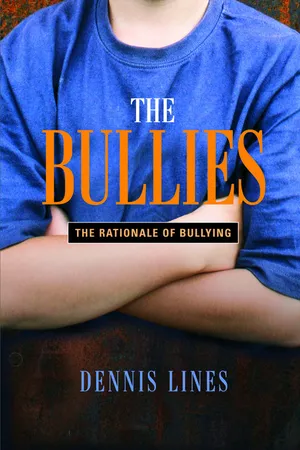Psychology
Nature and Nurture in Development
Nature and nurture in development refers to the ongoing debate about the relative influence of genetics (nature) and environment (nurture) on human development. This debate explores how biological and environmental factors interact to shape an individual's behavior, personality, and abilities. Researchers now recognize that both nature and nurture play significant roles in shaping human development.
Written by Perlego with AI-assistance
Related key terms
Related key terms
1 of 4
Related key terms
1 of 3
11 Key excerpts on "Nature and Nurture in Development"
- eBook - ePub
Evolutionary Psychology
The Basics
- Will Reader, Lance Workman(Authors)
- 2023(Publication Date)
- Routledge(Publisher)
The word ‘nurture’ comes from the same root as ‘nurse’ (meaning ‘to care for’), and this interpretation is consistent with what many consider to be the most important part of environmental influence – the relationship between child and its primary caregivers (e.g. mum and dad). However, the way nurture is more typically used is to describe the entirety of the child’s environment and would include social factors such as interactions with peers (as well as parents), physical traumas such as oxygen starvation at birth, any diseases that the child has had or any toxins that have been ingested, other factors many of which we almost certainly know nothing about at the moment. The environment, you see, is a very broad and complicated set of influences as it simply describes the set of causes that aren’t genetic.Nature nurture: explaining similarities and differences
An important distinction that needs to be made is the extent to which we are attempting to explain differences between people or similarities. Much of developmental psychology focusses on explaining differences between people such as why some people are more intelligent than others, why some people go on to develop a mental illness and why some people are bold and others shy. As we shall see, there are evolutionary theories that attempt to explain individual differences (see also Chapter 6 ). Somewhat less frequently, developmentalists will focus on things that we all share such as how we acquire language, manage social interactions or develop a sense of morality. Again, there are evolutionary psychological theories for these too. But to begin with, let us consider the nature–nurture debate as it applies to differences by looking at research into a concept known as heritability.Heritability
The problem with trying to separate out nature and nurture is that there are so many confounds. Say we wanted to find out whether intelligence was down to the genes or the environment we could run a study – as many have – in which we look at correlations between the child’s intelligence and that of their parents. Imagine that you find that there is a positive correlation: more intelligent children tend to have more intelligent parents. What can you conclude? In terms of the nature–nurture debate, the answer is – nothing. Parents provide their DNA to their children but, in most cases, they also provide some of their environment so we cannot know which is making the difference. Are children smart because they have inherited ‘smart’ genes from their parents? Or is it because they have been brought up in a ‘smart’ environment? Or is it some combination of the two? What we need is a way of separating out these two influences so that we can study each one separately. - eBook - ePub
Psychology in Social Context
Issues and Debates
- Philip John Tyson, Dai Jones, Jonathan Elcock(Authors)
- 2011(Publication Date)
- Wiley-Blackwell(Publisher)
In this chapter, we consider this controversy around genetic explanations in psychology. We’ll look at the terms of the nature–nurture debate, and its modern expression in behavioural genetics. We’ll see that human psychology is best understood as resulting from an interaction between genetic and environmental factors. We’ll then consider why such genetic explanations are so appealing within everyday discourse, and the problems such explanations may present.6.1 The Nature–Nurture DebateThe nature–nurture – or heredity–environment – debate is a longstanding one. It predates the emergence of psychology, because any form of reflexive discourse needs to consider the origins of human nature and the causes of differences between individuals. The debate concerns the extent to which our nature is determined by our genetic inheritance, or nature , versus the extent to which it is determined by the environment in which we develop, or nurture (Gross, 2009). The nature–nurture debate relates to questions about both universal aspects of human nature and the causes of individual differences (Jarvis, 2000). We’ll focus on explanations of individual differences, and consider behavioural genetics as a modern genetic approach to human differences in the next section.6.1.1 The unfolding debateThe nature–nurture debate in its modern form can be seen in seventeenth-century philosophy: René Descartes believed that human capabilities were determined at birth, while John Locke suggested that the human mind was a blank slate (or tabula rasa) to be written on through experience. The debate appears in the earliest stages of psychology. Herbert Spencer applied evolutionary theory to human society in developing what became known as social Darwinism . This suggested that members of society are engaged in a battle for survival, and that if freed from government interference the “best” will rise to the top of society. This was followed by the eugenic theories of Francis Galton, who suggested that individual differences in capability were the result of biology, and that society could only be improved through policies of selective breeding. Others viewed human character as being environmentally determined, and they advanced theories of reform Darwinism - eBook - ePub
- Richard M. Lerner(Author)
- 2018(Publication Date)
- Routledge(Publisher)
This issue pertains to the source of human behavior and development. Simply, a question is raised about where behavior and development come from. In its most extreme form the issue pertains to whether behavior and development derive from nature (or in modern terms, heredity, maturation, or genes) or, at the other extreme, whether behavior and development derive from nurture (or in more modern terms, environment, experience, or learning). However, whatever terms are used, the issue raises questions about how inborn, intrinsic, native, or in short, nature characteristics (for example, genes) may contribute to development and/or, in turn, how acquired, socialized, environmental, experienced, or in short, nurture characteristics (for example, stimulus–response connections, education, or socialization) may play a role in development. Table 3.1 lists some terms used in regard to nature and nurture contributions, respectively. The separation, or split, between nature and nurture illustrated in the table reflects a key distinction made by philosophers and scientists about the bases of human development. The separation between nature and nurture is an exemplar of the tendency in modern thought about human development to approach the study of people with concepts that reflect conceptual “splits.” That is, realities about development are discussed or debated in either-or terms. I noted in Chapters 1 and 2 that such bifurcation of concepts of development can be traced in modern philosophy at least to the ideas of the seventeenth-century philosopher, René Descartes. The study of human development has been a field wherein fundamental conceptual issues have been framed traditionally as Cartesian splits (Overton, 2015a) - eBook - ePub
- Ian Fairholm(Author)
- 2012(Publication Date)
- Bloomsbury Academic(Publisher)
The term nurture used to refer specifically to the type and quality of care the child received from its parents (particularly the mother) and how important this care was in the development of a particular psychological trait, but more recently the meaning of the term has been greatly expanded. It now tends to refer to any environmental (and therefore non-genetic) factor, which obviously includes parental influence but also incorporates stimuli that offspring can experience or be affected by whilst in the mother’s womb, plus the impact of extended family members and peers, and influences from the media, schooling and socio-economic status throughout life.Now you may be thinking, surely most psychological traits are influenced to some extent by elements of both nature and nurture? Of course you’d be right and this is a point I will be expanding upon throughout the chapter. There are reasons why distinctions are often made between nature and nurture when talking about this issue, implying that it’s a case of either one or the other. The main reason is a historical one and it relates back to a point I made in the opening chapter: that debates are often defined by their extreme positions.For much of the twentieth century this debate tended to be dominated by psychologists who favoured one side almost exclusively over the other, though it’s probably fair to say that most psychologists actually tended to occupy a position somewhere in between those two extremes. In the last couple of decades progress has slowly been made, in terms of the science used to study the contributions of nature and nurture and also in terms of encouraging both sides to consider if some form of synthesis might be possible. The idea that there is some degree of interaction between nature and nurture is becoming increasingly common, though the debate is now moving towards questions about the precise relationship between the two interacting forces for different psychological variables. Not surprisingly, psychologists who argue that aspects of nature and nurture interact in determining mental capacities and behaviour are referred to as adopting an interactionist position within this debate. - eBook - ePub
The Development of Children’s Thinking
Its Social and Communicative Foundations
- Jeremy Carpendale, Charlie Lewis, Ulrich Muller(Authors)
- 2017(Publication Date)
- SAGE Publications Ltd(Publisher)
The second issue concerns the role of the brain in thinking. Obviously, the brain is essential in explaining human thinking. But given this, it is still possible to interpret the role of the brain in cognition in contrasting ways from the perspectives of different worldviews. The cognitivist perspective assimilates neuroscience to the information-processing and computational view of the mind, according to which the brain is assumed to process input. The result is an output that we refer to as conscious experience or action. From the developmental or relational-process perspective, the brain as part of the nervous system is the organ that expands and makes more complex the child’s relation to the world and allows for learning about the interactive potential of the world.2.1 Nature, nurture, and forms of interaction
How thinking develops is the problem we grapple with in this book. In explaining the human ability to think, answers tend to fall into two types, focusing either on biological or social factors – nature or nurture. The study of human development is often cast in terms of a contrast between nature and nurture, a debate that was already ongoing among the ancient Greeks in the fourth and fifth centuries bce (Karmiloff-Smith, 2015). Use of the terms and the separation between nature and nurture can be traced to 1582 when a British teacher, Richard Mulcaster, discussed the ways in which they work collaboratively in child development (West & King, 1987). That collaborative notion, however, was transformed when Sir Francis Galton (1822–1911), Darwin’s cousin, set the terms in opposition to one another (i.e. nature vs nurture). This is the way they are more commonly conceptualised (Spencer et al., 2009). It is also part of how we often talk about children’s characteristics concerning what they are born with compared to what they have learned.Unfortunately, innateness is a rather ill-defined term that can have very different meanings. For example, Matteo Mameli and Patrick Bateson (2006) discuss 26 different definitions of innateness. Broadly, the most important conceptualisations in this context are that a trait can be considered innate (a) if it is not learned; (b) if it is present at birth; (c) if it is genetically determined; and (d) if it is highly heritable. However, as Mameli and Bateson show, none of these definitions identifies a coherent concept of innateness. The fact that a trait is present at birth does not rule out that it has been acquired in the course of prenatal development (Gottlieb, 1997; Spencer et al., 2009). The idea that innateness means that a trait is genetically determined is also too simplistic ‘because no phenotype is such that only genes are needed for its development. Genes by themselves don’t do anything’ (Mameli & Bateson, 2006, p. 158). The idea that innateness implies a lack of learning suffers from the fact that learning is a diffuse and ill-defined notion. The problem with the idea of heritability is that it refers to the variability of a trait in a given population at a particular point in time. As a consequence, traits that are invariant in a population (e.g. walking on two legs) cannot be innate, and changes to the composition of the population can change the heritability of the trait in an organism – both notions that run counter to what we usually imagine when we think that some trait is innate. - eBook - ePub
Counting What Counts
Reframing Education Outcomes
- Yong Zhao, Yong Zhao(Authors)
- 2015(Publication Date)
- Solution Tree Press(Publisher)
Third, environments and experiences also affect the degree to which certain traits are developed or suppressed. A person may be born with a strong inclination for entrepreneurship, but if he is discouraged to take risks, the person’s entrepreneurial talent may not be developed. A child born with a more adventurous nature can be taught to become risk-averse. On the other hand, if creativity is encouraged in the culture, a person born to be less creative can certainly become more so.Fourth, the environment affects how genetic traits may be realized or how the potentials are expressed. The same is true for how we satisfy our basic desires motivationally. For example, while it is human instinct to love their offspring, how parents express that love is determined by their culture and experiences. The same personality trait can have different manifestations in behavior in different cultures, as well. For instance, some behaviors that are considered to indicate aggressiveness in one culture may be viewed as normal or being frank in another.Thus, it is safe to assume that our genes do not act alone to determine who we are. What we become is essentially the result of interesting interactions between genes and environment, as well as the result of previous interactions. Our development is a matter of nature expressed, enhanced, or suppressed via nurture (Ridley, 2003).Mechanism of Mind: Examples of Nature via NurtureUltimately, as explained by developmental psychology and evolutionary psychology, life at any moment is full of unspecified and inexhaustible factors that would potentially influence the development of individual minds (Patel, Honavar, & Balakrishnan, 2001). What researchers know is that there are certain components that play a rather critical role in shaping the individual development of nonacademic skills over the life span.PerceptionAs one of the most fundamental mechanisms in human development, individual perception constitutes the basis for the development of many other skills, including nonacademic skills like emotions, self-efficacy, and others (Bornstein & Arterberry, 2003). Nonacademic skills and their development over time rely first and foremost on the individual development of perception. Perception is the process between the input of sensory information and the output of behaviors (Bornstein, Arterberry, & Mash, 2011). Research studies in the development of perception over the life span of individuals have revealed mechanisms for the development of certain nonacademic skills as an interactive process of predisposed biological conditions and experiences. - eBook - ePub
Human Behavior and Social Environments
A Biopsychosocial Approach
- Dennis Saleebey(Author)
- 2001(Publication Date)
- Columbia University Press(Publisher)
CHAPTER FIVENature and Nurture,Neurons and Narratives:Putting It All TogetherIn nature’s infinite book of secrecyA little I can read—SHAKESPEARE; ANTONY AND CLEOPATRAI n this chapter, I will attempt to weave together some of themes from the previous discussion of the three conceptual frameworks as well as the philosophical motifs of the book. To do this, let us discuss two areas: the interplay between the influence of the physical and social environment and the influence of genes and constitutional factors on human behavior and aspects of child development, and the biological basis of major mental disorders, especially depression and schizophrenia.NATURE AND NURTURE: HOW NECESSARY ARE PARENTS?This is a droll heading, but it is meant to evoke an issue that recently has been raised dramatically, forcefully, and controversially by Judith Rich Harris in her book, The Nurture Assumption (1998). Generally, in most corners of this culture we relegate enormous power and influence to parents in determining the direction and outcome of the development of their children. For many parents, this requisite and assumption is often fraught with ambivalence. On the one hand, it is an endorsement of the power and necessity of the parental role and brings with it not only responsibility but the possibility of contributing to the well-being of family, community, and society. On the other hand, the obligation for shaping the malleable stuff of childhood into a virtuous, competent adult figure is, at the least, a daunting prospect. And should one’s child begin to show signs of faltering, rebelliousness, failure, or any number of other human frailties, parents are apt (and their neighbors, too) to blame themselves. Think of the Swede and his Merry here (chapter 2 - eBook - ePub
- Brad Piekkola(Author)
- 2016(Publication Date)
- SAGE Publications Ltd(Publisher)
5 Nature and NurtureLearning Objective
This chapter has as its concern a debate that begins with Charles Darwin’s cousin Francis Galton (1822–1911) around the degree to which human psychological functions, especially intelligence, is a matter of biological inheritance or whether experience makes any contribution. It is known as the argument over nature versus nurture. More specifically we will consider:- Galton’s dismissal of nurture in favor of eugenics and biological determinism.
- Intelligence testing and the elimination of human defect.
- Evolutionary psychology and the explanation of human activity as adaptations to ancient environmental challenges encoded in brain mechanisms.
- Cultural psychology’s explanations of human conduct in terms of historical, cultural developments and processes.
Framing Questions
- Do you believe that some people are naturally superior/inferior to other people and that there is nothing to do to alter innate biological influences?
- Can the mental behavior of modern humans be explained in terms of basic cognitive mechanisms of the brain that solved problems in the evolutionary past?
- If we can understand the differences between groups of people in terms of cultural influences might there be a basis for recognizing our common humanity in that?
Introduction
The terms nature and nurture were introduced by Richard Mulcaster (1531–1611), an educator, in reference to what he believed were the two influences that acted together in promoting the development of the child (West and King, 1987). Parental inheritance and experience thus worked together in establishing the capabilities of the adult. Galton, as will be explained, tended to treat these terms, and what they represent, as opposed. He favored an hereditarian - Rosalyn H. Shute(Author)
- 2018(Publication Date)
- Routledge(Publisher)
He observed that how a child’s mind develops depends on the culture and the tools (such as language) that it provides, while minds in turn modify the culture. Inspired by this work, Urie Bronfenbrenner (1979) pointed out that most psychological research had neglected consideration of the multi- layered contexts that influence the developmental trajectories taken by individuals. Non- western researchers similarly rejected the aim of developmental psychology to search for universal truths, with A. Bame Nsamenang (1999) re-defining de velopmental psychology as ‘the science of human development in context ’ (p. 163, emphasis added). Evolutionary perspectives While such contextual approaches have become widely accepted, there is also a striking amount of research and media space today devoted to the role of ‘nature’ in development. Biological explanations for psychological phenomena have become more prominent, as a result of scientific advances such as the human genome project, increased understanding of epigenetics, and improved neuro-imag ing methods. In fact, it has been suggested that the discipline of psychology has moved on from the cognitive revolution of the latter part of the twentieth century to a new biological zeitgeist (Campbell, 2012). Was that other Enlightenment philosopher, Jean Jacques Rousseau (1712 –1778), closer to the mark than his predecessor Locke, in suggesting that there is a predetermined blueprint for development, that unfolds over time? The idea of development as a process of ‘maturation’, as embraced by the pioneering stage theorist Arnold Gesell and colleagues (1946), is consonant with this view. Perhaps this unfolding takes a sex- specific course. Today we often hear, for example, that teenage boys are inclined to take risks as their brains are still maturing, while they become more aggressive due to their pubertal surge in testosterone levels- eBook - ePub
Introducing Bronfenbrenner
A Guide for Practitioners and Students in Early Years Education
- Nóirín Hayes, Leah O'Toole, Ann Marie Halpenny(Authors)
- 2022(Publication Date)
- Routledge(Publisher)
532). Sociocultural theory and the bioecological model are two of the few accounts of human development that go beyond traditional ideas of ‘nature versus nurture’ to not only investigate how the social and the psychological interact to direct outcomes but also provide mechanisms (mediating tools and proximal processes, respectively) explaining how this happens. Both theories recognise that nature and nurture are intertwined and that development is fundamentally linked to the context in which it takes place so that “the human mind is not merely influenced, facilitated, or undermined by culture and society. Instead, it is designed and moulded by them” (Chirkov, 2020, p. 120). In other words, nature is nurture. Children are not all the same. As Frønes puts it: “There is not one childhood, but many, formed at the intersection of different cultural, social and economic systems, natural and man-made physical environments. Different positions in society produce different experiences” (1993, p. 1). Mediated learning As in the bioecological model, sociocultural theory indicates that development begins with the traits and dispositions of the child – the things they have inherited biologically from their parents – but recognises that children continue to develop through the “interweaving of cultural and biological inheritances” (Lantolf & Thorne, 2006, p. 59). The child’s own personality and abilities are impacted by her experiences, her contexts and her culture to influence how she will turn out. In sociocultural terms, this is known as ‘mediated learning’; in Bronfenbrenner’s terms, such interweaving between person and context happens through proximal processes. Sociocultural theorists believe that “mediated minds are developed out of the social activity that is embedded in the cultural values of particular communities” (Ellis, 2012, p. 524) - eBook - ePub
The Bullies
Understanding Bullies and Bullying
- Dennis Lines(Author)
- 2007(Publication Date)
- Jessica Kingsley Publishers(Publisher)
Chapter 3 The Nature–Nurture Influence on Behaviour Social hierarchies exist in all forms of human groupings, whether at an international, national, community or family level, and what appears to secure stability in all of these contexts is power and control. Although bullying is a dual or group activity, we first need to understand it at the individual level, and whilst attention is customarily given to victims this book focuses in particular on the motivations of those who are the protagonists. In this chapter, I question whether some individuals are predisposed towards violence and dominant behaviour owing to their genetic makeup, or whether social conditions cause them to be so. This question centres upon the nature–nurture debate. Is there evidence that the genetic makeup of particular individuals inclines them more than others towards bullying behaviour? Or is it all to do with upbringing? The nature–nurture debate The apparent opposite influences on behaviour of genetics and environmental factors has been the subject of much medical and psychological research and debate. An early awareness of the debate was reflected in one of Shakespeare’s plays, The Tempest, in which Prospero speaks of Caliban as ‘A devil, a born devil, on whose nature / Nurture can never stick’. But the principal importance of the dual influence of nature and nurture has been the need to identify particular genes that determine characteristic personality traits or diseases to which individuals may become prone to suffer. Studies of personality also depend upon an understanding of the genetic makeup and the environmental nurturing of the particular individual. My interest in the basis of aggressive behaviour is not merely to reflect on how we become who we are, but to ask some searching social questions about how aggressive people should be dealt with for the smooth running of society
Index pages curate the most relevant extracts from our library of academic textbooks. They’ve been created using an in-house natural language model (NLM), each adding context and meaning to key research topics.
Explore more topic indexes
Explore more topic indexes
1 of 6
Explore more topic indexes
1 of 4

